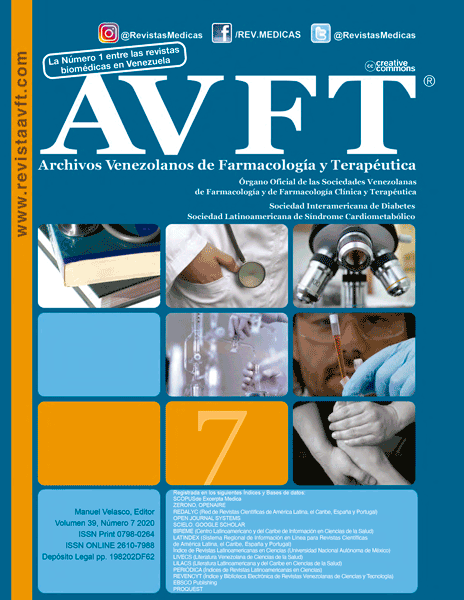Influence of If-current blockade on rat heart contractility with a model of myocardial infarction
Palabras clave:
a model of myocardial infarction, hyperpolarization-activated currents, isolated heart, rat.Resumen
Hyperpolarization-activated cyclic nucleotide-dependent channels (HCN) are widespread throughout the body and participate in various physiological processes, the most important of which is the generation of spontaneous electrical activity in the heart and the regulation of synaptic transmission in the brain. The physiological role of HCN channels in the working healthy myocardium is still the subject of ongoing research. The objective of this research is to study the effect of If blockade with ZD7288, on heart inotropy in rats with a modeled myocardial infarction. Two methods were used, the classical model of reproduction of myocardial infarction in experimental animals, developed in 1960 by Selye, and the isolated heart technique according to Langendorff. The peculiarities of the inotropic function of an isolated heart with a model of myocardial infarction during current blockade activated by hyperpolarization were evaluated. The If blocker, ZD7288, at concentrations of 10-9 M and 10-7 M, led to an increase in the pressure wave amplitude by 43% and 40% (p≤0.05), respectively, and at a concentration of 10-5 M, to a decrease in the pressure wave amplitude by 49% according to Langendorff’ technique. The value of the maximum rate of rising of the pressure wave (dP/dtmax) increased during perfusion of ZD7288 at concentrations of 10-9 M and 10-7 M by 31%, and the maximum rate of drop of the pressure wave (dP/dtmin) increased by 27% and 32%, respectively. The addition of the drug to the solution (10-5 M) caused a decrease in dP/dtmax by 44%, and dP/dtmin by 41%. Thus, it can be concluded that impaired coronary blood supply is not the only factor in the pathogenesis of the disease typical of human myocardial infarction.




